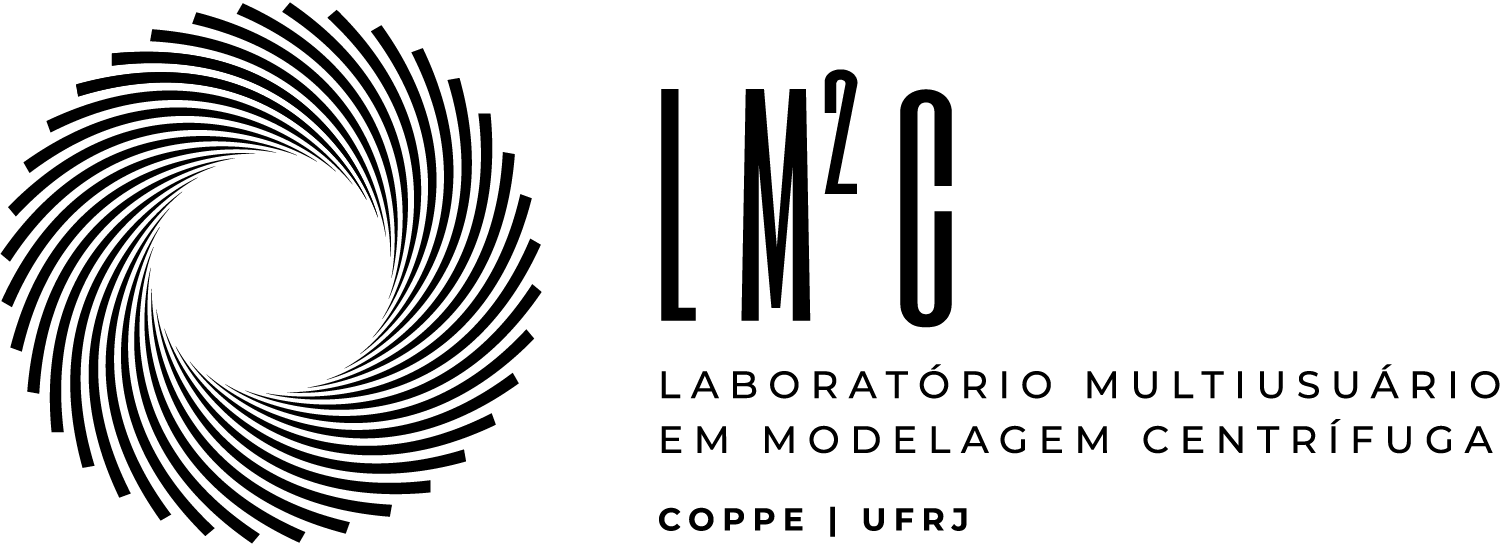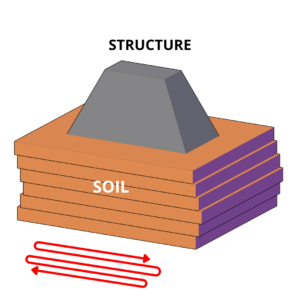Soil-Structure Interaction
Soil-structure interaction is a branch of civil engineering that involves the joint study of problems with materials with very different characteristics, such as soil and concrete, or soil and steel. In this context, centrifugal modeling enables efficient and complex simulations of geotechnical engineering and soil-structure interaction problems, leading to significant time and resource savings. Moreover, the stress and motion conditions obtained through reduced model simulations performed in a geotechnical centrifuge, and subsequently used in numerical analyses, serves to validate methodologies and project guidelines proposals that will guide future applications in a variety of real world scenarios.
In this context, the LM²C teams have been studying models involving soil-pipeline, soil- pile and soil-footing interactions in both clay and sandy soils under various loading situations, both onshore and offshore.
Submarine Geotechnics
In the submarine geotechnics research line, a broad range of issues have been studied. The phenomena associated with the behavior of submarine pipelines buried in clay and sandy soils deserve special mention due to our partnerships with leading companies in the area such as CENPES / PETROBRAS and TECHNIP. In this context, specific problems associated with deep and ultra-deep water exploration have been analyzed, such as the propagation of pressure waves in risers at the touch down point (TDP).
Other areas of interest in submarine geotechnics include: the stability of canyon slopes or gentle slopes relative to the occurrence of small and medium intensity earthquakes or in the presence of weak layers; and the study of the dynamics of hydroplaning and turbidity currents in subsea mud flows.
Earthworks and Environmental Geotechnics
The main activity in the earthworks research line has been the study of landfills built on soft soils improved with traditional and jacketed granular columns. In this context, the measurement of displacements was implemented through the technique of particle image velocimetry and the construction of embankments by means of in-flightpluviation.
On the subject of environmental geotechnics, the LM2C research team have conducted various studies on the cone penetration resistance of iron tailings. And more recently, the LM2C research team has been conducting studies on the use of construction industry waste as a base material in pavement structures, with or without the addition of cement and polypropylene fibers. Furthermore, LM2C has been researching ways to use sludge from sewage (biosolid) treatment plants in landfills. In this context, the capacity of this material for the retention of heavy metals and the behavior of contamination plumes in various soil types have been studied.
Analysis of tailings dams liquefaction potential
Changes in soil properties due to the action of monotonic, transient, or cyclic loads are responsible for significant damage of tailing dams. The prediction of soil liquefaction depends on an adequate analysis of the behavior of undrained materials, in terms of increase of pore water pressure and weakening of the solid-fluid mixture, during and after the periodic motion. To better understand this phenomenon, the mechanisms involved, and alternatives to avoid them, the use of physical modeling is an important tool. Within this line of research, methods to prepare material are involved, taking into consideration the condition on the field and the particularities when using reduced models. It is also part of this line of research to study possible triggers for the liquefaction process, both for static events (such as increasing the water level or applying an overload) and dynamic events (earthquake simulation using the shaking table).






















